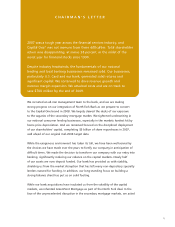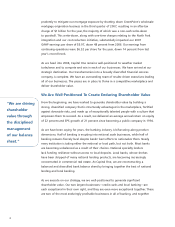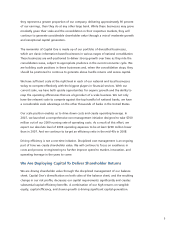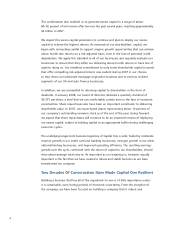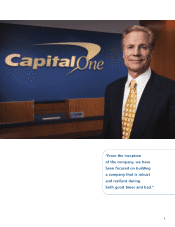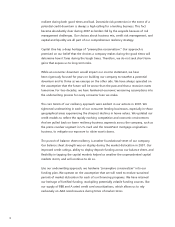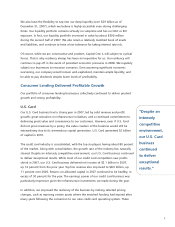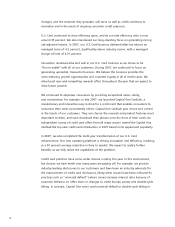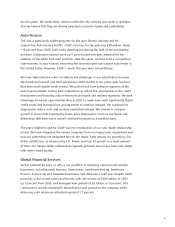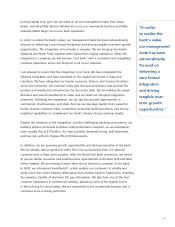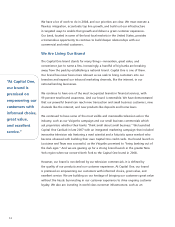Capital One 2007 Annual Report Download - page 4
Download and view the complete annual report
Please find page 4 of the 2007 Capital One annual report below. You can navigate through the pages in the report by either clicking on the pages listed below, or by using the keyword search tool below to find specific information within the annual report.
“We are driving
shareholder
value through
the disciplined
management
of our balance
sheet.”
prudently to mitigate our mortgage exposure by shutting down GreenPoint’s wholesale
mortgage origination business in the third quarter of 2007, resulting in an after-tax
charge of $1 billion for the year, the majority of which was a non-cash write-down
to goodwill. This write-down, along with one-time charges relating to the North Fork
integration and our cost reduction initiative, substantially impacted our 2007
GAAP earnings per share of $3.97, down 48 percent from 2006. Our earnings from
continuing operations were $6.52 per share for the year, down 14 percent from last
year’s record levels.
As we head into 2008, Capital One remains well-positioned to weather market
turbulence and to compete and win in each of our businesses. We have arrived at our
strategic destination. Our transformation into a broadly diversified financial services
company is complete. We have an outstanding team of results-driven executives leading
all of our businesses. The pieces are in place to thrive in a competitive marketplace and
deliver shareholder value.
We Are Well-Positioned To Create Enduring Shareholder Value
From the beginning, we have worked to generate shareholder value by building a
strong, diversified company that is structurally advantaged in the marketplace, fortified
against downside risks, and made up of exceptionally talented people with a culture that
empowers them to succeed. As a result, we delivered an average annual return on equity
of 22 percent and EPS growth of 21 percent since becoming a public company in 1994.
As we have been saying for years, the banking industry is bifurcating along product
dimensions. Half of banking is erupting into national scale businesses, while half of
banking remains fiercely local despite banks’ best efforts to nationalize them. Nearly
every institution is taking either the national or local path, but not both. Most banks
are becoming unbalanced as a result of their choices. National specialty lenders
lack funding resilience without access to local deposits. Local banks, whose shelves
have been stripped of many national lending products, are becoming increasingly
concentrated in commercial real estate. At Capital One, we are reconstructing a
balanced and diversified bank balance sheet by bringing together the best of national
lending and local banking.
As we execute on our strategy, we are well-positioned to generate significant
shareholder value. Our two largest businesses—credit cards and local banking—are
each exceptional in their own right, and they are even more exceptional together. These
are two of the most enduringly profitable businesses in all of banking, and together
2



